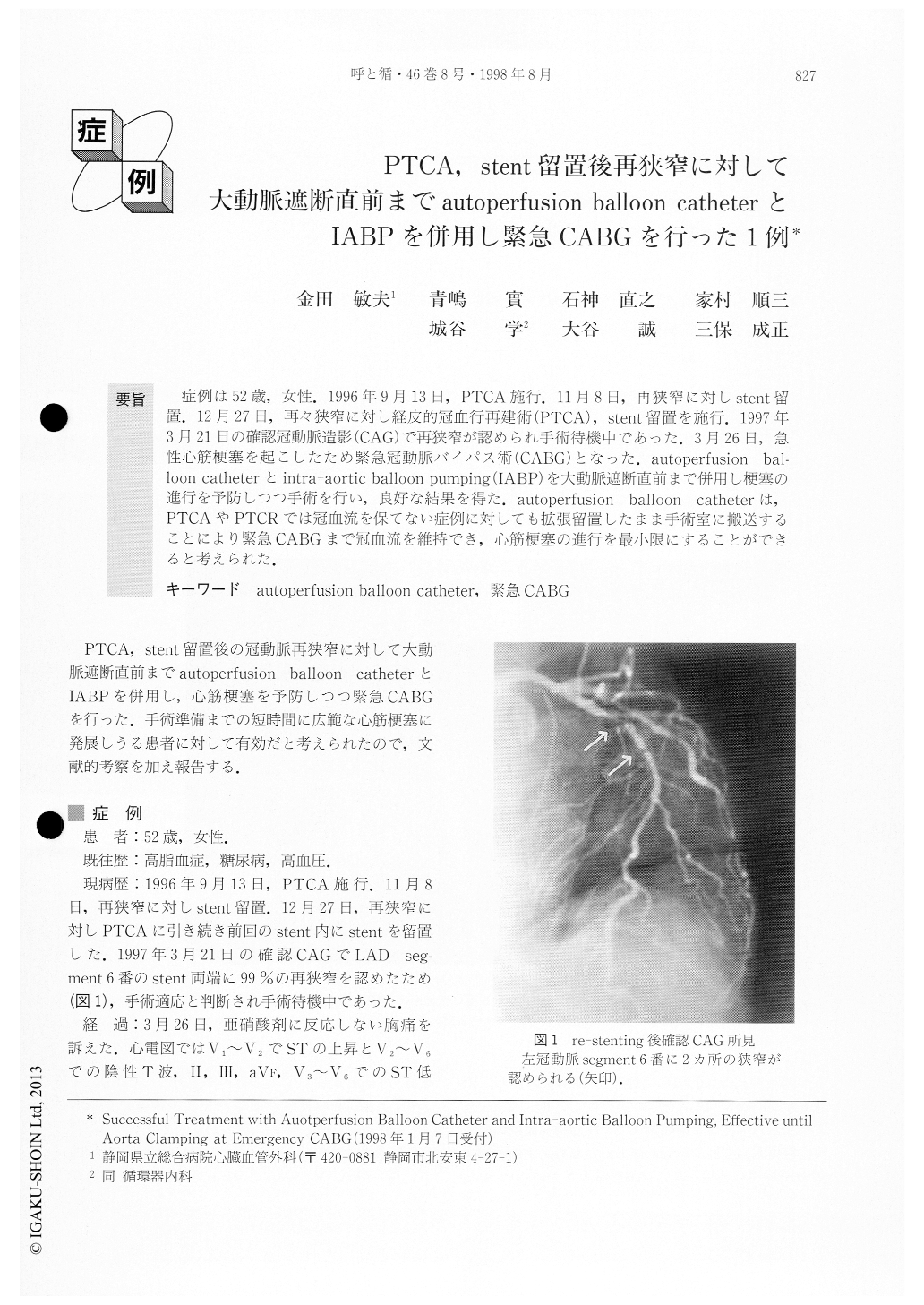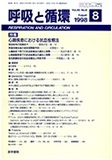Japanese
English
- 有料閲覧
- Abstract 文献概要
- 1ページ目 Look Inside
症例は52歳,女性.1996年9月13日,PTCA施行.11月8日,再狭窄に対しstent留置.12月27日,再々狭窄に対し経皮的冠血行再建術(PTCA),stent留置を施行.1997年3月21日の確認冠動脈造影(CAG)で再狭窄が認められ手術待機中であった.3月26日,急性心筋梗塞を起こしたため緊急冠動脈バイパス術(CABG)となった.autoperfusion bal—loon catheterとintra-aortic balloon pumping(IABP)を大動脈遮断直前まで併用し梗塞の進行を予防しつつ手術を行い,良好な結果を得た。autoperfusion balloon catheter は,PTCAやPTCRでは冠血流を保てない症例に対しても拡張留置したまま手術室に搬送することにより緊急CABGまで冠血流を維持でき,心筋梗塞の進行を最小限にすることができると考えられた.
A 52-year-old female underwent percutaneous trans-luminal coronary angioplasty (PTCA) of the left ante-rior descending coronary artery (segment 7) on Septem-ber 13. 1996. She was stented at the same position for re -stenosis on November 8. On December 27, she under-went re-PTCA and stented at the site of the previous stenting for re-stenosis again. On March 21. 1997. follow up coronary angiographv revealed re-stenosis at the same position. The patient was waiting coronary artery bypass grafting (CABG). On March 26, because acutemyocardial infarction had occurred, emergency CABG was perfomed. We used intra-aortic balloon pumping (IABP) and autoperfusion balloon catheter until aorta clamping was completed and successfully prevented progression of the infarction. Until emergency CABG can be performed, autoperfusion balloon catheter canmaintain coronary flow and minimize the progress of myocardial infarction in cases in which coronary flow cannot be maintained by PTCA or PTCR.

Copyright © 1998, Igaku-Shoin Ltd. All rights reserved.


